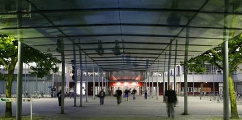| abstract | | AXLR8 is a co-ordination and support action funded by the European Commission Directorate General for Research & Innovation under the Health theme of the 7th Framework Programme (FP7) within the funding framework on Alternative Testing Strategies: Replacing, reducing and refining use of animals in research. AXLR8 is particularly aimed at accelerating a transition in Europe toward a more sophisticated approach to chemical and product safety assessment with the common goals of improved health and environmental protection, positioning the EU on the leading-edge of a rapidly developing global research area, and working toward replacement of animal testing. An essential element of the AXLR8 project is the organization of annual workshops to provide a scientific platform for high-level information exchange and critical discourse among coordinators of EU-funded projects and independent European and international scientists on progress achieved in developing alternative testing strategies, as well as challenges, needs, and priorities for future EU research.
The second annual AXLR8 workshop (AXLR8-2) was held in Berlin, Germany in May 2011 with a focus on developing a ‘roadmap to innovative toxicity testing’. Among the more than 50 invited participants were representatives of projects funded by the FP6/7 health and environment programs, the heads of Member State centers on alternatives to animal testing, the leaders of international efforts to establish advanced molecular toxicology from the United States and Japan, and members of the AXLR8 Scientific Panel and Consortium.
There was a general view that limitations intrinsic to conventional high-dose in vivo studies limit their relevance and utility as tools for modern safety assessments aimed at protecting and improving human health (e.g., in relation to nano-materials, endocrine disrupters, and environmental chemicals), and that the way forward requires a shift towards a pathway-based paradigm for safety assessment. In particular, assessment of a substance’s toxic ‘mode of action’ considered by the AXLR8 Scientific Panel and other authorities to be a cornerstone of ‘21st century’ safety assessment (NRC, 2007; EPA, 2009). Development of a robust understanding of the networks of biological pathways – many of which are not yet described in full – and key events associated with chemical toxicity can feed back into the innovation cycle to support greener, ‘biocompatible’ chemistries, and can contribute to the study and treatment of human diseases, guiding research on fundamental biology and feeding into the product innovation cycle. By focusing on priority diseases with integration of human patient data, bio-monitoring of healthy and diseased populations, and other modern exposure assessment tools, it should be possible to better understand population diversity and susceptibility, and perhaps achieve a closer alignment between human health and environmental risk assessments. Opportunities for synergistic partnerships between EU projects with high-impact initiatives such as Germany’s Virtual Liver project, the Japanese METI-NEDO High Throughput Assay Systems project and the US Virtual Embryo, Tox21, and NexGen programs were noted. References
NRC [US National Research Council]. Toxicity Testing in the 21st Century: A Vision and Strategy. Washington, DC: National Academies Press, 2007.
Spielmann H. et al. Alternative Testing Strategies – Progress Report 2010: Replacing, reducing and refining use of animals in research http://axlr8.eu/axlr8-2010-progress-report.pdf
Spielmann H and Seidle T. Alternative Testing Strategies – Progress Report 2011 & AXLR8-2 Workshop Report on a ‘Roadmap to Innovative Toxicity Testing’. http://axlr8.eu/assets/axlr8-progress-report-2011.pdf
|



